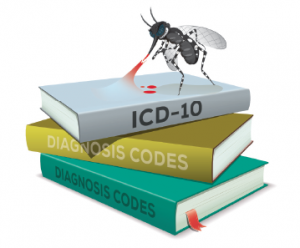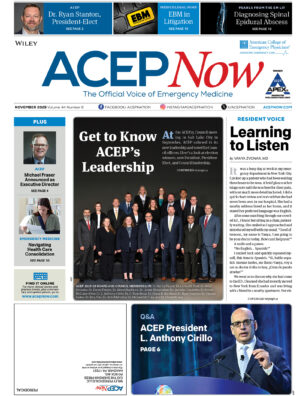CPT codes are updated annually, typically on Jan. 1, and describe the cognitive and procedural care provided by emergency physicians. ICD diagnosis codes are also updated annually, but rather than on a calendar-year cycle, new codes become effective on Oct. 1.
While ICD-10 diagnosis codes are important for coding and billing purposes to communicate the necessity of the care provided, the codes also fill a critical role in facilitating epidemiologic tracking. The World Health Organization has been using ICD-10 codes to track disease and injuries for years. When a novel disease such as Zika virus becomes clinically important, a key component of tracking the disease is to develop, approve, and release an ICD-10 diagnosis code that facilitates disease incidence calculations and the identification of patient-specific details.
Currently, there is no specified ICD-10 code for Zika, and until there is a specific code available, the ICD-10 code A92.8 (other specified mosquito-borne viral fevers) may be reported. This less-specific code is not very effective for tracking the spread of Zika. There is a proposed code (A92.5) for the 2016 ICD-10 annual release. However, it cannot be used until it is officially released in October.
Patients with suspected Zika may present with symptoms such as fever, maculopapular rash, arthralgia, conjunctivitis, headache, and myalgia, which should be reported when the disease is not confirmed. For example, if a patient presents with myalgia, headache, and arthralgia, the clinician may suspect Zika, but it is not confirmed. The diagnosis of M79.1 (myalgia), R51 (headache), and M25.50 (arthralgia, unspecified) would be reported. Reporting Zika would not be appropriate.
On the other hand, if the patient is formally diagnosed with Zika, then A92.8 (other specified mosquito-borne viral fevers) should be reported until such time as a formal Zika diagnostic code is available.
What About Pregnancy?
Diagnosis reporting for illnesses associated with pregnancy adds another layer of complexity. For patients diagnosed with Zika during pregnancy, providers should report O98.5X (other viral diseases complicating pregnancy, childbirth, and the puerperium). The final digit indicates the trimester (1 for first, 2 for second, 3 for third). For example, a patient who is six weeks’ pregnant is treated for fever, myalgia, and headache and reports recent travel to Brazil. A complete evaluation is performed. The patient is diagnosed with Zika. The ICD-10 diagnosis codes of O98.511 (other viral diseases complicating pregnancy, first trimester) and A92.8 (other specified mosquito-borne viral fevers) would be reported.
Consider these additional ICD-10 codes for other flaviviruses:
- A90: Dengue fever
- A91: Dengue hemorrhagic fever
- A92.0: Chikungunya virus disease
Documenting the signs and symptoms that brought the patient to the ED helps to support the medical necessity of the care provided. This fall, we will have a specific Zika code that can be used to track the spread of the virus through submitted claims data.
Pages: 1 2 | Multi-Page






No Responses to “ICD-10 Diagnosis Codes to Use for Zika Virus Documentation”